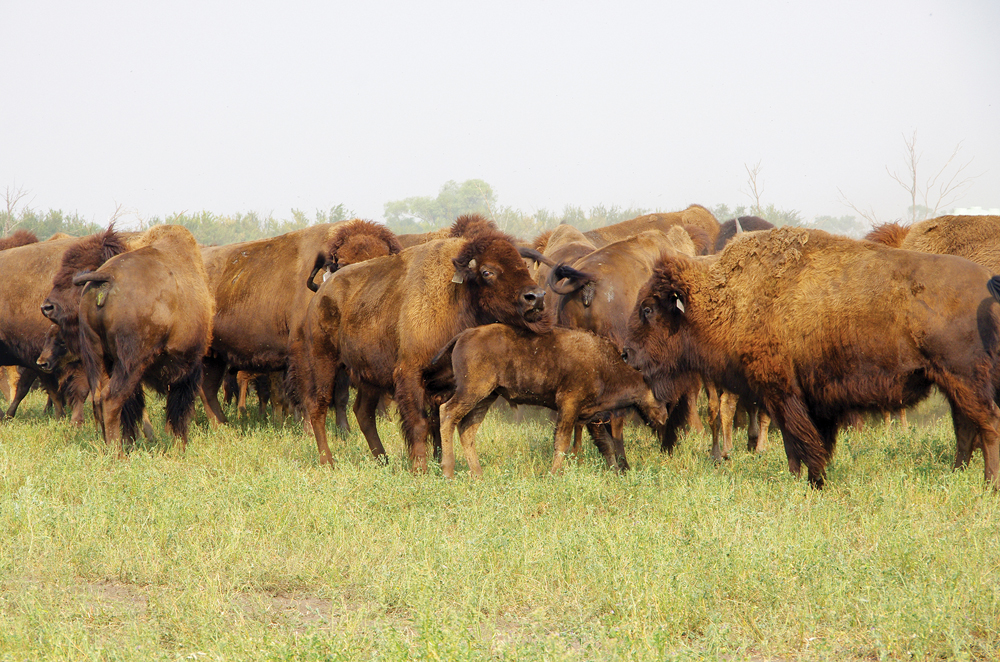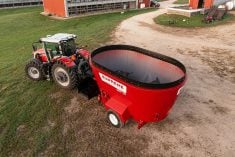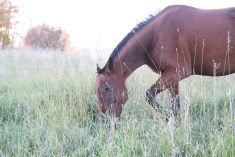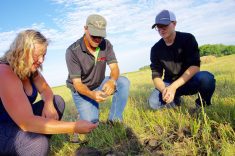It’s the worst of both worlds for Manitoba’s bison sector.
Bison have yet to see the same best-in-decade prices as the cattle market, but bison producers deal with most of the same input cost surges, according to the Manitoba Bison Association.
CanFax, the service that analyzes Canadian livestock markets, has cited continued tight cattle supplies in North America as a major driver for the strong market. The sector has recently seen some of the best prices since peaks in 2015.
Read Also

Linebreeding horses drives genetic bottlenecks
Too much linebreeding and prioritizing pedigree can narrow genetic diversity and lead to horse health problems in future generations.
Bison prices haven’t shown the same surge.
According to a January market report from the Canadian Bison Association, fall 2022 prices ranged from $1.30 to $2.25 per pound for the previous year’s bulls and $1.30 to $1.82 per pound for 2021 heifers. Calf prices ranged from $1.05 to $1.21 a pound.
In January 2020, the association reported previous fall calf prices at $2.47 to $2.58 a pound for bulls and $2.05 to $2.27 for heifers.
Why it matters: Bison is more accessible to consumers than it was 20 years ago, but producers say the sector needs more exposure to the average grocery shopper if it wants to move past its niche.
Soaring grain and other feed costs have been a stressor across all livestock sectors in recent years but in the bison sector, those costs are taking a bigger toll on profitability, said association president Robert Johnson.
The production cycle of bison is longer than that of cattle, taking 22 to 26 months and sometimes as long as 28 months to finish.
“That cost of gain just adds up,” he said. “…I know we’re never going to displace beef off the store shelf or out of people’s diets, but it’s pretty hard when all the other inputs have gone up for the [bison] cow-calf producer, our primary producer in our industry, but then the price they get for selling their calves or their yearlings, it definitely hasn’t gone up as much as on the beef side.”
Though bison meat has crept into the mainstream, the market is far less commoditized than it is for other meats.
Most of the association’s membership relies on direct marketing, farmers markets or online presence, Johnson said. That means public outreach is critical to grow the consumer base.
“There’s a lot of unknowns about bison,” he said. “We need to do a better job at telling our story, the story of the animal, the story of how good the meat is or how easy it is to cook.”
It’s a meat with rich historical significance in the Prairies, he noted, and although it is an easy substitute in most beef recipes, it has yet to gain a wide foothold for the average home cook.
There have been improvements at retail. Calgary-based Noble Premium Bison sources from prairie-raised animals, for example. The company sells to major retailers including Sobeys, Costco, Safeway, IGA, Thrifty Foods, Longos and Federated Co-op.
“It is there. It’s in these mainstream grocery stores and it’s on grocery store shelves,” Johnson said.
But the problem “is getting people to realize that this food that’s actually coming, it’s [from an] entirely 100 per cent Canadian-owned company that uses Canadian animals.”
The CBA lists 57 retailers on its website. That number includes a significant number of ranches that do double-duty as direct marketers.
In Manitoba, the association lists three retailers: Borderland Agriculture and Bison Spirit Ranch in western Manitoba and Central Plains Bison in the central region. All three are also listed for direct marketing services and online sales.
The national organization counts 90 operations, 10 of which are in Manitoba, in its direct marketing directory.
Price discovery
Bison meat prices are generally determined by wholesale prices, such as those garnered by the few commercial processing streams or based on exports to the U.S., according to Johnson. The CBA’s regular outlooks on those numbers help inform direct market prices.
“As an association, we’ve done some work helping producers allocate the different cuts and find pricing to it,” he said.
Canada exported just over 613,600 kilograms of fresh bison meat in 2022. A strong American dollar has helped raise those numbers since 2015, the CBA has noted. Exports had previously dropped in most years since 2009.
The trend of exporting live bison, which are processed in the U.S., has further squashed meat exports, according to the association. Just under 30,600 live bison were exported to the U.S. in 2022, a record number.
Live exports to the U.S. dropped sharply in 2016, which the CBA blamed on low supply, but have increased year-over-year since.
Opportunity
In terms of industry growth, there are positive signs.
Production is up. Beyond the 22.3 per cent increase in all live exports between 2021 and 2022, slaughter also increased 10.7 per cent. In total, production from 2021 to 2022 was up 19.2 per cent, according to the CBA’s January report.
Manitoba is the only province to report fewer bison in 2021 than in 2016, according to the census of agriculture. In the latter year, the province had a 16.4 per cent larger herd and 4.6 per cent more farmers producing them. But nationally, bison numbers were on the rise.
In 2021 there were over 25 per cent more bison than in 2016, although the number of producers increased by less than two per cent. The average producer had 151 head, according to census numbers, a 23. 8 per cent jump.
“There’s more fresh bison available to consumers now than maybe at any other time,” Johnson said.
















